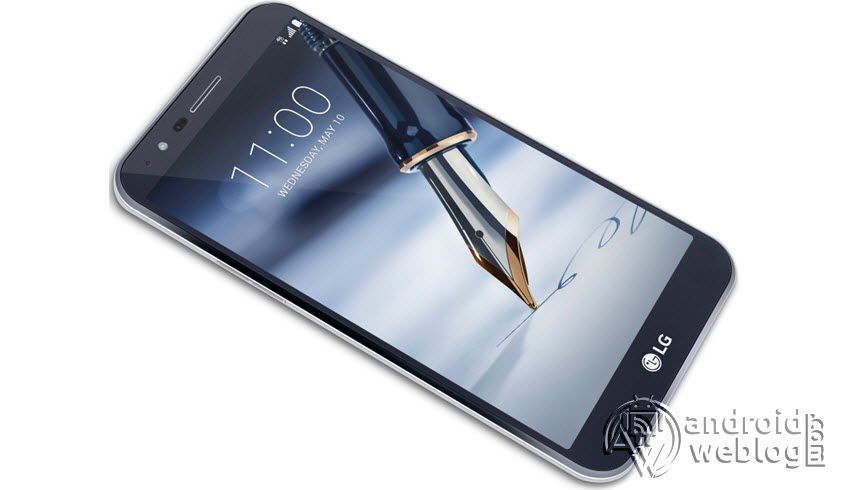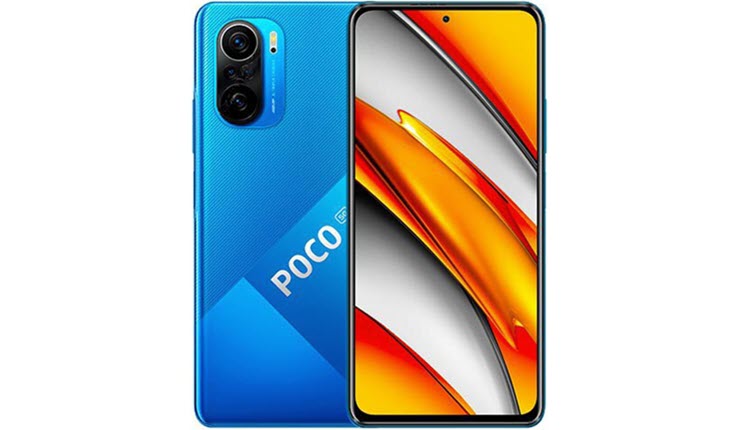How to Root LG Stylo 3 Plus (MetroPCS/ T-Mobile) and Install TWRP Recovery

If you own a LG Stylo 3 Plus device, and also want to root the device, then you are on the right page.
LG Stylo 3 Plus comes in three variants, which includes the LGM470, T-MObile (TP450), and MetroPCS (MP450). The device is equipped with a 5.7-inch Full HD (1920 x 1080 pixels resolution) IPS display, which displays the big picture, with the intense clarity with vivid and bright colors. On the rear side of the device, there is a 13 megapixels camera is provided, which captures the breathtaking pictures of up to 4160 x 3120 resolution, and capable to record FullHD videos up to 1920 x 1080. Besides, there is a 5 megapixels camera is provided on the front side of the device, which is meant for the selfies and comes with all of the required features. The rear side of the device also boasts of a fingerprint sensor, which provides all of the required advanced security features, at the fingertips. The device runs on the Qualcomm Snapdragon 435 MSM8940 Octa-core processor, paired with a 2GB of RAM. The internal storage is 32GB, from which 22.9GB is usable. Just like the Samsung Galaxy Note, the Stylus 3 also comes with the Stylis Pen, which features the customizable settings for Writing and Drawing. The device supports 4G LTE, and runs on the Android 7.0 Nougat out of the box. The 3080 mAh battery is enough for day to day normal usage. With the Pen Pop UX, users can choose the app shortcuts, and can customize several other features.
If you are an Android Enthusiast, and want to Root and Install TWRP recovery on your beloved, then you have landed on the right page. In the due course of the article, we will guiding you through the process to root LG Stylo 3 Plus LGM470, T-MObile (TP450), and MetroPCS (MP450).
The TWRP features the material design, and attractive user interface (UI), and by following this guide you can install latest TWRP for LG Stylo 3 Plus. You can download TWRP Recovery from the links provided in the pre-requisite section of this article. Kindly note that this is a unofficial TWRP recovery and is only for LG Stylo 3 Plus LGM470, T-MObile (TP450), and MetroPCS (MP450) (Kindly confirm the model by going to Settings>About). The process given below is merely for rooting and installing TWRP on LG Stylo 3 Plus, do not try out this method on any other device.
If you want to unleash the full potential of the hardware of your LG Stylo 3 Plus, then rooting and flashing custom recovery like TWRP is the main concern. The Stock ROMs have often limited and unsupported features in the sense of Customization. When you have a rooted device and also flashed TWRP recovery, then you are free to install any Custom ROMs, Mods, Kernel, and Xposed etc., as well as many apps which requires root access to work properly. You can easily root the device with One Click Android Root Tool, with either via PC or through the APK, which is a quick process.
Table of Contents
Brief Details and Advantage of TWRP Recovery
TWRP (Team Win Recovery Project) is an open source, community development project. By flashing the TWRP, your device will be enabled to install any custom firmware, rooting your smartphone, mod zip files for customizations, Xposed Modules for customized features, one click root and unroot processes. Apart from that, it allows you to take Full Nandroid Backup and restore it later, one click image file flashing, remove bloatware, overclock and underclock. Using TWRP, one can easily clean Wipe, Cache and Data after flashing any image file to reflect the changes and rectify minor errors due to cache.
For installing the TWRP, your LG Stylo 3 Plus phone must have the Unlocked bootloader. That means you have to firstly unlock the bootloader to root your device as well doing any customization.
Prerequiste
Ensure to check your model number, which must be:
- LG Stylo 3 Plus LGM470, T-MObile (TP450), and MetroPCS (MP450)
You must have to ensure that prior to rooting your phone , you have read thoroughly the disclaimer and you agree to proceed further on your risk.
- Phone Should be Charged
Your phone must be 70% charged at least, else, it may lead to complications sometimes while experimenting. Why to take risk, try to charge it fully.
- Back Up
If you are either going to root your phone or install a Custom ROM, it is a good habit to make a back up of your phone. Make a back up of all your media like images, videos and all on your PC and your contacts on Cloud.
- Enable USB Debugging
(Applicable only for PC method, Skip if you will use APK method)
You must enable USB debugging option by going in to Settings, Applications and Developer options.
Downloads For Rooting LG Stylo 3 Plus LGM470, T-MObile (TP450), and MetroPCS (MP450)
Download Universal ADB Drivers here (If your PC have already drivers installed then skip this)
Download platform-tools/ SDK Tools package from Android SDK on PC from here. (Android command line tools> SDK Tools package)
Download TWRP Recovery for LG Stylo 3 Plus from here:
TWRP Recovery 3.1.1.0. (Mediafire Link)
Download SuperSU by Chainfire from here.
Make sure that you have downloaded the required files (link in pre-requisite section of this article). Then, proceed to the steps.
Steps to Unlock Bootloader of LG Stylo 3 Plus LGM470, T-MObile (TP450), and MetroPCS (MP450)
Note: If you have already unlocked bootloader, then skip these steps.
Step 1: First, you need to Connect your LG Stylo 3 Plus Device to the computer, in Fastboot Mode. You can reboot your device to fastboot using the command in adb terminal:
adb reboot bootloader
Step 2: Now, open the Adb Terminal in PC, and then just enter this command:
fastboot oem unlock-go
Step 3: Then, issue this command:
fastboot oem unlock-go
At this stage, your device will be reboot automatically. Now, you can Root LG Stylo 3 Plus, as bootloader of your device is already unlocked.
Steps to Flash/ Install TWRP on LG Stylo 3 Plus LGM470, T-MObile (TP450), and MetroPCS (MP450)
Step 1: Assuming you have already downloaded the platform-tools from Android SDK (SDK Manager) platform-tools on your PC. The platform-tools contains the required adb and fastboot binaries.
Step 2: Make sure that the drivers are installed on your computer. Then, skip to the next step.
Note: If Developer Settings and USB Debugging settings are already enabled on your device, as suggested in Prerequisite section, then simply skip the Step 3 and Step 4, and follow Step 5 directly.
Step 3: Now, enable the developer settings on your LG Stylo 3 Plus Device. To achieve the same, just navigate to the Settings -> About and then find the ‘Build Number ‘, and then tap on ‘Build Number’ for 7 times, this will enable the developer settings on your device.
Step 4: If you have USB Debugging already, then skip this step. If you have not, then open the Developer Options and then enable USB debugging option.
Step 5: Now, open the command prompt in computer/ ADB Terminal, and simply type the command:
adb reboot bootloader
Step 6: Your device should have not entered into fastboot mode. Now copy the TWRP.img file downloaded in prerequisite section, to the same folder where adb and fastboot binaries are located. Rename the file to ‘twrp.img’ and then enter this command:
fastboot flash recovery twrp.img
Step 6: Flashing takes few seconds generally to complete the TWRP flash process. After the flashing gets completed, disconnect the USB cable, Turn off the device by removing it’s battery and against inserting the same.
Step 7: Now, it’s time to boot into recovery for the first time. For doing the same, just Hold Volume Down+Power buttons, until the LG Logo appears on the screen, and then temporarily release the POWER button and hold it back until a white prompt appears on the screen, which is Factory reset screen.
IMPORTANT: Never release the VOLUME DOWN button in this process.
You must use the hard keys to select the ‘Yes’ and again ‘Yes’ to boot into the TWRP recovery mode.
NOTE: After the TWRP flash screen displays, you will see the option to type password to decrypt the filesystem, just ignore the same and press cancel button.
Procedure to Root LG Stylo 3 Plus LGM470, T-MObile (TP450), and MetroPCS (MP450)/ Install SuperSU
Make sure that you have downloaded SuperSU (link in pre-requisite section of this article). Then, proceed to the steps.
Step 1: In TWRP interface, navigate to Wipe>Format Data. There, just enter ‘yes‘, in the text box and then press enter. This will wipe the automatically encrypted filesystem, and decrypt it.
Step 2: Once the TWRP finishes the wiping, you must reboot back into the recovery. For doing the same, just navigate to the Reboot>Recovery.
Step 3: Now, recovery should boot. After recovery is booted, connect the phone to the computer, and then Enable ‘MTP’, which is located under the Mount section.
Step 4: Transfer the files ‘no-verity-opt-encrypt-**.zip’ and ‘SuperSU.zip to the internal storage or EXTSD of the device.
Step 5: Now, disconnect the device from the computer. Then, tap on Install. then go to the device’s storage and then select the ‘no-verity-opt-encrypt-**.zip’. Now, finally swipe the ‘Swipe to confirm flash’ button, which is located at the bottom of the screen.
Step 6: The flashing process takes few seconds to complete. Once it gets completed, follow the same method to flash the root package, i.e. SuperSU. Then just wait for 1-2 minutes after the zip files are flashed, and then reboot the device. Be aware that phone might take 3-5 minutes to boot for the first time after flashing recovery, and also might boot-loop once or twice at the splash screen. Don’t panic, it’s normal. That’s it, all done.
Congratulations, now you have rooted LG Stylo 3 Plus LGM470, T-MObile (TP450), and MetroPCS (MP450) and also flashed the TWRP. Now, you can install Xposed Framework, and customize your smartphone as per your preference. If you wish to verify, you may download and check the Root Status through Root Checker app.
Credits: messi2050
Source: XDA











it does not work it takes me to a warning screen prior when selecting yes to factory reset.